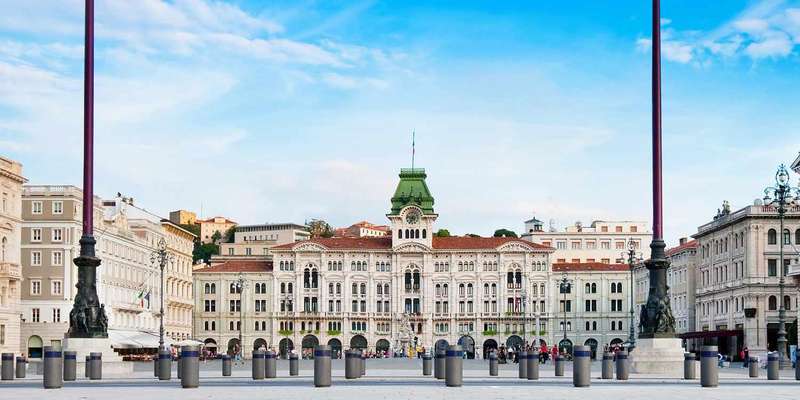- Home
- Useful Tips
- Visiting Trieste with limited...
Exploring Trieste with limited mobility presents unique challenges many travelers don't anticipate. Over 30% of visitors with accessibility needs report difficulties navigating historic European cities, often encountering unexpected barriers in ancient streets and landmarks. The Adriatic gem's hilly terrain and Austro-Hungarian architecture, while beautiful, can turn what should be a joyful discovery into a frustrating experience. Many accessible guides offer generic advice that doesn't account for Trieste's specific topography or the reality of its cobbled streets. This leaves travelers uncertain about which attractions truly accommodate wheelchairs, where to find accessible restrooms, or how the local transport system functions for those with mobility challenges. The stress of inaccessible vacations isn't just about physical barriers – it's the emotional toll of compromised experiences and the financial risk of booking unsuitable accommodations.


Navigating Trieste's terrain: Strategic routes for smooth exploration
Trieste's layered urban landscape requires careful planning to avoid steep inclines and uneven surfaces. Start your exploration along the flat waterfront area, where the expansive Piazza Unità d'Italia offers barrier-free access to Trieste's grandest square. From here, the nearby Teatro Verdi and the San Giusto Cathedral (via the accessible rear entrance) become achievable cultural stops. Local knowledge proves invaluable – the city's main shopping street, Via San Nicolò, features gradual ramps where medieval streets normally would have steps. For reaching higher areas like the San Giusto Hill, the city's AMT bus line 24 provides wheelchair-accessible service from Piazza Oberdan. Many visitors don't realize that several key museums, including the Revoltella Museum, have installed elevators and accessible restrooms despite being housed in historic buildings. The secret lies in identifying these prepared venues and connecting them with Trieste's surprisingly robust network of ramped sidewalks and elevators embedded in the urban fabric.
Accessible Adriatic gems: Must-visit attractions with full mobility access
Trieste rewards accessible travelers with several fully inclusive attractions that showcase its maritime soul. The Miramare Castle, while perched dramatically on a cliff, offers complete wheelchair access through its gardens and ground floor exhibits, with a special shuttle available from the parking area. Down at sea level, the newly renovated Maritime Museum provides elevator access to all floors, featuring tactile exhibits perfect for varied accessibility needs. Don't miss the accessible path along the Barcola promenade, where you can enjoy Trieste's beloved waterfront culture with level access to several cafés. The Roman Theatre in the city center surprises many with its wheelchair-accessible viewing platform, offering an unobstructed perspective of the ancient ruins. For literary enthusiasts, the James Joyce Museum on Via Bramante has step-free entry and navigable interiors. These carefully selected sites demonstrate how Trieste's cultural treasures can be enjoyed without physical barriers when you know where to look.
Moving with ease: Trieste's accessible transport options decoded
Understanding Trieste's transportation network transforms accessibility from challenge to convenience. The city's AMT buses feature wheelchair ramps on all modern vehicles, with priority seating clearly marked – look for routes marked with the universal access symbol on timetables. Key connections like the 6, 9, and 30 lines serve major attractions with low-floor boarding. Taxis present another option, with operators like Radio Taxi Trieste maintaining wheelchair-accessible vehicles available by advance booking. For those considering driving, blue badge holders can park in any designated spot, including the convenient waterfront parking near Piazza Unità. The train station, while historic, has made significant accessibility upgrades with elevators connecting all platforms and tactile guidance paths. A local tip: the Opicina Tramway's historic cars aren't wheelchair-friendly, but the panoramic views can still be enjoyed via an accessible parallel bus route (number 2) that follows a similar hillside route with modern conveniences.
Resting comfortably: Accessibility-approved accommodation strategies
Choosing the right base in Trieste makes all the difference for travelers with mobility needs. The city center offers several fully accessible hotels, with the NH Trieste and Starhotels Savoia Excelsior Palace leading in roll-in showers and spacious layouts. For those preferring apartment stays, look for properties near the Cavana district – this area combines flat terrain with proximity to attractions and often features modernized buildings with elevators. Beyond physical amenities, strategic location selection reduces daily challenges; staying within 500 meters of Piazza Unità ensures easy access to accessible transport and dining options. Many visitors don't realize that several historic palazzos have been retrofitted with accessibility features while retaining character – the Hotel Victoria is a prime example with its discreet lift serving all floors. When booking, don't hesitate to ask specific questions about doorway widths, bathroom grab bars, and step-free entrance paths, as local hoteliers have become increasingly responsive to accessibility concerns in recent years.



